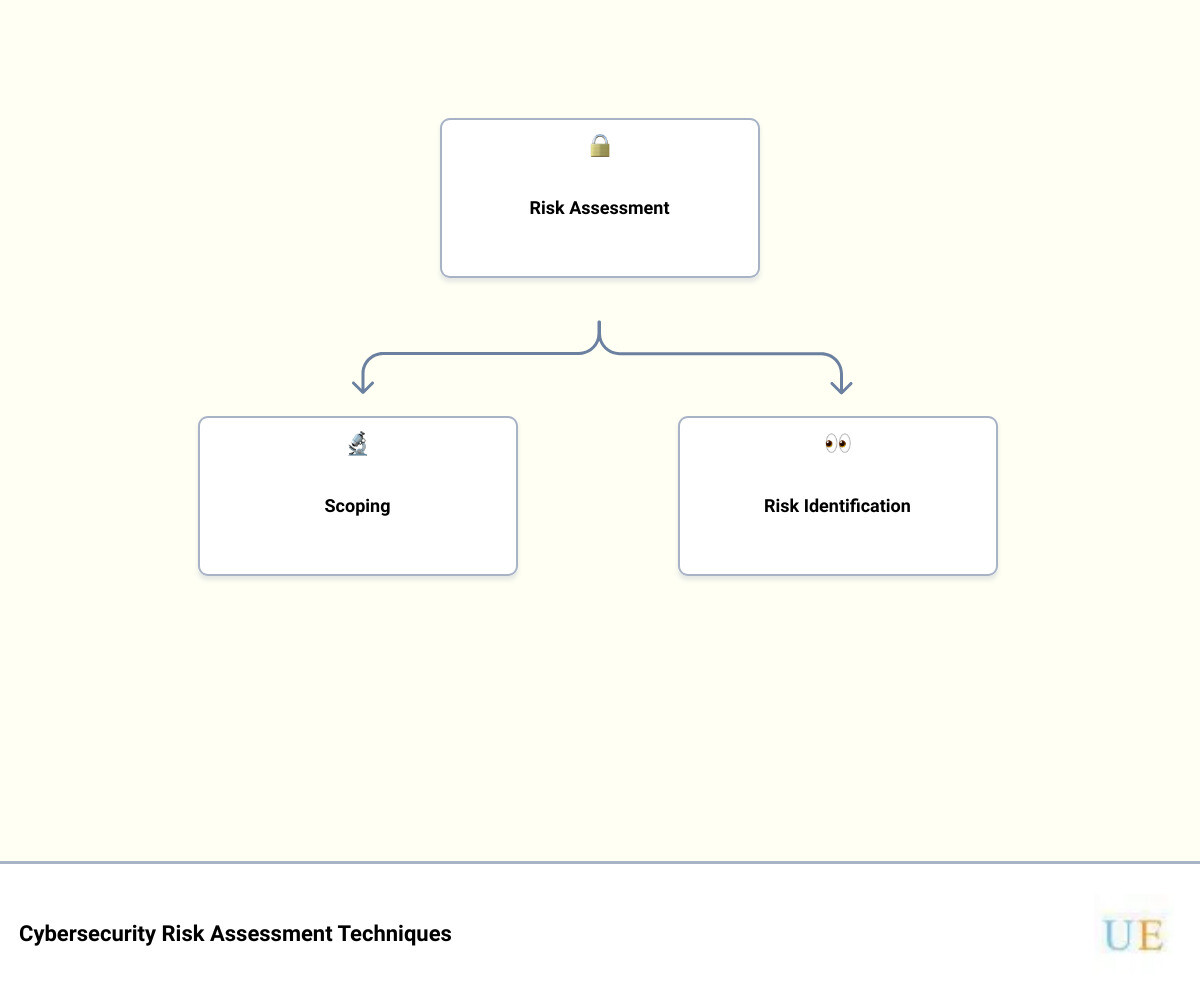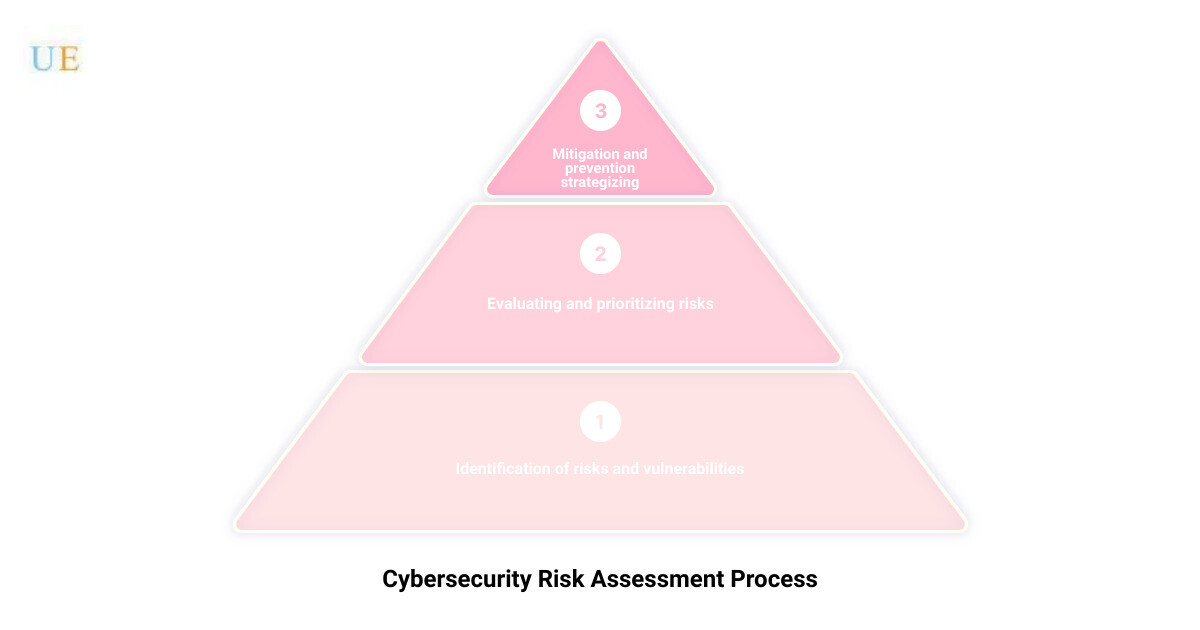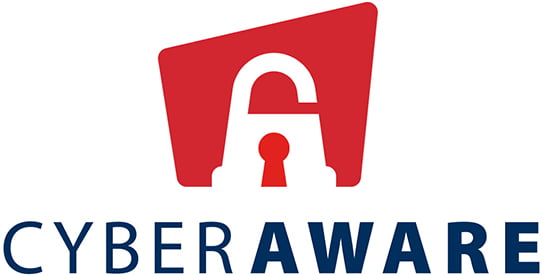In an increasingly digital world, the role of cybersecurity has become paramount for businesses. With almost every organization now connected to the internet, the risk of cyber threats is pervasive and potentially devastating. As a business owner, the question is no longer whether you will face a cyber threat, but when and how severe it will be. This stark reality underscores the critical importance of risk assessment techniques in cyber security.
At Upper Echelon Technology Group, we understand that managing cyber risk is not just about technology. It’s about understanding your business needs, leveraging your technology assets, and strategically aligning your cybersecurity with your business objectives. We are dedicated to helping businesses like yours navigate the complex cyber threat landscape through comprehensive and personalized cybersecurity risk assessments.
The process of conducting a cybersecurity risk assessment involves identifying your key business objectives, recognizing the IT assets essential to achieving those objectives, and understanding the cyber threats that could negatively impact these assets. The ultimate goal is to provide a clear picture of your threat environment, enabling informed decisions on implementing security controls.
But before we delve into the details, here’s a quick snapshot of the key components of a cybersecurity risk assessment:
- Scoping: Determining what parts of your business will be included in the assessment.
- Risk Identification: Identifying potential cyber threats and vulnerabilities.
- Risk Analysis: Evaluating the likelihood and potential impact of these threats.
- Risk Evaluation: Comparing the analyzed risks against your organization’s risk tolerance.
- Documentation: Documenting all findings and recommendations for mitigating risks.
In the following sections, we will unpack each of these steps and explore innovative techniques that can enhance the effectiveness of your cybersecurity risk assessment. Stay tuned to unlock cybersecurity’s hidden secrets and learn how risk assessment can serve as a powerful tool in your cybersecurity arsenal.
Understanding Cybersecurity Risk Assessment: Definition and Purpose
The digital age continues to bring about remarkable advancements, but it also introduces an array of cyber threats. These threats are not static; they evolve and become more sophisticated over time. As a business owner, it’s not a question of “if” but “when” these threats will try to infiltrate your system. This is where cybersecurity risk assessment becomes crucial.
A cybersecurity risk assessment is a systematic process to identify, evaluate, and prioritize risks associated with the use of digital assets. It aims to understand the potential threats to your business, the vulnerabilities in your system that could be exploited, and the potential impact if a cyber attack were to happen.
One of the main purposes of conducting a cybersecurity risk assessment is to inform decision-making and help you develop a robust cybersecurity strategy. It offers a comprehensive view of your cyber risk landscape, enabling you to make informed decisions about where to allocate resources for mitigation and prevention. As Abi Tyas Tunggal from UpGuard rightly puts it, cybersecurity risk assessments help organizations “understand, control, and mitigate all forms of cyber risk. It is a critical component of risk management strategy and data protection efforts.”
At Upper Echelon Technology Group, we recognize the importance of personalized IT Managed Services. We understand that effective cybersecurity is not just about solving tech issues but also about understanding your unique business needs. Our approach to cybersecurity risk assessment is tailored to your specific requirements, focusing on how you can leverage your technology assets to enhance your business.
Our cybersecurity risk assessment process is thorough and continuous. We don’t just conduct a one-time assessment; we continuously monitor your system for new threats and vulnerabilities. We understand that the cyber threat landscape is constantly evolving, and we ensure our strategies and techniques are always up-to-date.
In the next sections, we’ll delve deeper into the steps involved in conducting an effective cybersecurity risk assessment and explore some innovative risk assessment techniques. With the right approach, you can unlock the hidden secrets of cybersecurity and turn it into a powerful tool for protecting and growing your business.
The Six Essential Steps for an Effective Cybersecurity Risk Assessment
When it comes to building a robust cybersecurity framework, conducting a thorough risk assessment is key. It allows businesses, like yours, to recognize potential vulnerabilities and plan ahead, thus minimizing the chances of a security breach. Here at Upper Echelon Technology Group, we recommend following a systematic six-step process, which is outlined by the National Institute of Standards and Technology’s Guide for Conducting Risk Assessments.
Identifying Threat Sources
The first step involves identifying and classifying threat sources. These could be adversarial threats such as hostile nation-states or organized crime groups, or environmental threats like hurricanes and earthquakes that could potentially disrupt your IT infrastructure. Comprehensive threat catalogues, such as those offered by CMS, BSI, ENISA, can serve as helpful resources in this step.
Identifying Threat Events
Once the threat sources have been identified, the next task is to pinpoint potential threat events and their relevance. These could range from phishing attacks and session hijacking to physical entries, such as break-ins. Understanding these threat events helps businesses correlate them to the appropriate threat sources.
Identifying Vulnerabilities
The third step involves identifying vulnerabilities and predisposing conditions that increase the likelihood of threat events leading to loss. To identify these vulnerabilities, organizations may conduct a current state analysis against a security framework such as NIST CSF, NIST SP 800-171, NIST 800-53, COBIT, or the ISO 27000 Series. Additionally, a technical penetration test is recommended to identify vulnerabilities at a technical level.
Determining the Likelihood of Exploitation
The fourth step involves determining the likelihood of the selected threat events resulting in a loss. This is a complex process, involving several sub-steps. Tools like the NIST 800-30 can provide all the necessary information to complete this step effectively.
Determining Probable Impact
Next, businesses need to focus on determining the most likely impact of a loss event. Again, the process can be quite involved, but comprehensive guidance is provided in the NIST 800-30 guide.
Calculating Risk as Combination of Likelihood and Impact
The final step in the risk assessment process involves calculating the risk value, which is a combination of the likelihood and impact values determined in steps 4 and 5. NIST 800-30 provides detailed guidance on how to use a 9-block matrix to accomplish this step.
By following these six steps, businesses can gain a comprehensive understanding of their cybersecurity risk landscape, allowing them to make informed decisions about implementing necessary controls and mitigations. At Upper Echelon Technology Group, we are committed to assisting businesses through this process, providing personalized cybersecurity services that cater to your specific needs and objectives.
Innovative Risk Assessment Techniques in Cybersecurity
As the digital landscape continues to evolve, so too must our approaches to securing it. In the world of cybersecurity, standing still is not an option. In this vein, let’s delve into the innovative risk assessment techniques in cybersecurity that we at Upper Echelon Technology Group employ to safeguard your information systems.
Quantitative, Qualitative, and Semi-Quantitative Approaches
The first frontier of cybersecurity risk assessment techniques involves the use of quantitative, qualitative, and semi-quantitative methods. These methodologies, while different, all aim to evaluate the organization’s risk posture. A quantitative approach uses numerical values to represent potential loss and the probability that the loss will occur. This method provides a direct and clear comparison of risk factors.
On the other hand, a qualitative assessment uses a descriptive or subjective measure of risk based on the expertise of the assessor. A semi-quantitative approach combines elements of both, providing a balanced and comprehensive analysis.
We understand that each organization has unique needs and circumstances, which is why we tailor our approach to suit your business best.
Asset-Based, Vulnerability-Based, and Threat-Based Methodologies
Another innovative aspect of cybersecurity risk assessment involves asset-based, vulnerability-based, and threat-based methodologies. These techniques focus on different aspects of your IT infrastructure to identify potential risks.
Asset-based risk assessment identifies and evaluates assets that could be affected by a cybersecurity incident. Vulnerability-based risk assessment identifies weaknesses in systems or applications that could be exploited by threats. Threat-based risk assessment identifies and evaluates potential threats to the organization.
At Upper Echelon Technology Group, we consider all these factors, ensuring a holistic view of your cybersecurity risk landscape.
The Role of Automation in Risk Assessment
With the volume and complexity of cybersecurity threats growing daily, automation has become a critical component of effective risk assessment. Automated risk assessment tools can efficiently identify threats, assess vulnerabilities, and evaluate potential impacts. These tools can also help organizations prioritize their response strategies, saving valuable time and resources.
We at Upper Echelon Technology Group utilize the latest in automated risk assessment technologies, ensuring our clients receive the most thorough and efficient service possible.
In conclusion, effective cybersecurity risk assessment requires a blend of innovative techniques and methodologies. By leveraging a combination of quantitative and qualitative approaches, considering asset-based, vulnerability-based, and threat-based methodologies, and harnessing the power of automation, we can proactively manage and mitigate cyber risks. This will not only protect your company’s sensitive data but also contribute to its overall growth and success.
The Cybersecurity Risk Assessment Matrix: Scoring and Prioritizing Risks
Step into the world of strategic decision-making with the Cybersecurity Risk Assessment Matrix. An essential tool in the risk assessment process, this matrix simplifies the complex task of scoring and prioritizing risks, transforming it into a straightforward, manageable process.
Understanding the Risk Assessment Matrix
Picture a chessboard. Each square represents a unique combination of risk probability and impact. This is the essence of a Cybersecurity Risk Assessment Matrix. It provides a visual representation of the likelihood and severity of each identified risk.
The matrix is usually divided into a 5×5 grid, with one axis representing the likelihood of a risk occurring (ranging from ‘Rare’ to ‘Highly Likely’) and the other axis representing the potential impact (ranging from ‘Negligible’ to ‘Very Severe’). The intersecting squares result in a risk level, allowing us to classify each risk scenario from ‘Very Low’ to ‘Very High’.
This matrix aids in prioritizing risks, highlighting those that require immediate attention. It eliminates ambiguity, making it easier for all stakeholders to understand the risk landscape.
How to Use the Risk Assessment Matrix
Using the matrix is a straightforward process: assign a likelihood and impact score to each risk, then plot them on the matrix. For instance, if the risk of a SQL injection attack is considered ‘Highly Likely’ and its impact is ‘Very Severe’, the risk scenario would be classified as ‘Very High’ on the matrix, implying its immediate treatment is required.
The ultimate goal of using the matrix is to manage risks effectively. Risks that are above the agreed-upon tolerance level should be treated to bring them within the organization’s risk tolerance level. This could be done by avoiding, transferring, or mitigating the risk.
At Upper Echelon Technology Group, we apply these techniques to ensure your cybersecurity risks are within acceptable levels. As a cybersecurity-focused managed services provider, we believe in proactiveness. We don’t just fix tech issues; we focus on your business needs and leverage technology to help your business thrive.
Through our personalized approach to IT Managed Services, we help you understand your risk landscape better, enabling you to make informed decisions about risk treatment. By documenting all risk scenarios in a risk register, we ensure that you always have an up-to-date account of your cybersecurity risks.
In the dynamic landscape of cybersecurity, understanding and managing risks effectively can be the difference between business success and failure. Embrace the power of the Cybersecurity Risk Assessment Matrix and take control of your cyber risks.
The Role of Managed Services Providers in Cybersecurity Risk Assessment
In the ever-evolving world of cybersecurity, it’s not enough to merely react to threats as they occur. Instead, a proactive approach is needed, one that focuses on identifying and managing potential risks before they can be exploited. This is where managed IT services providers like Upper Echelon Technology Group LLC come into play.
How Upper Echelon Technology Group LLC Provides Personalized Risk Assessment Services
As an experienced managed IT services provider, we at Upper Echelon Technology Group LLC believe in providing a holistic and personalized approach to cybersecurity risk assessments. We understand that every business is unique and faces different challenges when it comes to cybersecurity. Therefore, our risk assessment techniques are tailored to suit the specific needs and objectives of your business.
One of our main objectives is ensuring that your technology serves your business instead of your business serving your technology. We take pride in our ability to identify areas where technology can improve your bottom line, making your company more profitable.
Our team of cybersecurity experts performs a thorough examination of your network and identifies any potential vulnerabilities. We also evaluate the likelihood of exploitation and the probable impact of any potential breaches. This information is then used to calculate your overall cybersecurity risk.
We believe in transparency and open communication. Therefore, we ensure that you are fully informed of our findings and the steps we recommend to mitigate any identified risks.
We also offer ongoing monitoring and management of your cybersecurity risks. This includes regular updates to your risk assessment, ensuring that it accurately reflects the current threat landscape and the state of your network.
In addition to our risk assessment services, we also focus on making your team more efficient by leveraging technology. Our managed IT services aim to solve your technology issues so you can focus on what matters most – running your business.
At Upper Echelon Technology Group, we aim to create a company culture that allows our employees and clients to reach their fullest potential. Our core values include a relentless pursuit of personal growth and a commitment to do the right thing, even when no one is looking.
In the end, our goal is to help you understand, control, and mitigate all forms of cyber risk, ensuring the future security of your organization.
In the next section, we will delve further into the future of cybersecurity risk assessment techniques and how they might evolve to meet the increasing complexity and sophistication of cyber threats.
Conclusion: The Future of Cybersecurity Risk Assessment Techniques
As we move further into the digital era, the landscape of cyber threats continues to evolve and expand at an unprecedented rate. This rapid evolution necessitates the continual development and refinement of cybersecurity risk assessment techniques to stay ahead of potential threats. At Upper Echelon Technology Group, we understand that the future of cybersecurity risk assessment lies in the adaptation and innovation of these techniques.
Automated risk assessments are expected to become more prevalent as artificial intelligence and machine learning technologies continue to mature. These technologies can quickly analyze vast amounts of data to identify potential vulnerabilities and risks, making assessments more efficient and accurate. Moreover, they can help in predicting future threats based on historical data, thus allowing organizations to take proactive measures to mitigate these risks before they materialize.
Furthermore, the future will likely see a shift towards a more holistic approach to risk assessment. This involves considering not only the technical aspects of cybersecurity but also the human elements. This means moving away from purely technical solutions and incorporating strategies for addressing human error, one of the most common causes of data breaches.
The integration of cybersecurity and business risk management is also expected to become more prominent. This approach recognizes that cybersecurity is not just an IT issue but a business issue that affects all aspects of an organization. By integrating cybersecurity into overall business risk management, companies can ensure that they are considering cybersecurity risks in all their strategic decisions.
Lastly, the future of cybersecurity risk assessment will likely involve more collaboration and information sharing among businesses, cybersecurity professionals, and government agencies. By sharing information about threats and best practices, we can collectively strengthen our defenses and stay one step ahead of cybercriminals.
At Upper Echelon Technology Group, we are committed to staying at the forefront of these developments. We constantly evaluate the services and products that we offer to our clients to ensure your network is protected and optimized 24x7x365. Our mission is to ensure that your technology serves your business instead of you serving your technology.
In the ever-evolving world of cybersecurity, risk assessment techniques will continue to evolve and adapt. By staying informed and proactive, we can protect our organizations from the complex and sophisticated cyber threats of the future.
Remember, the best defense is always a good offense. Stay safe out there.







